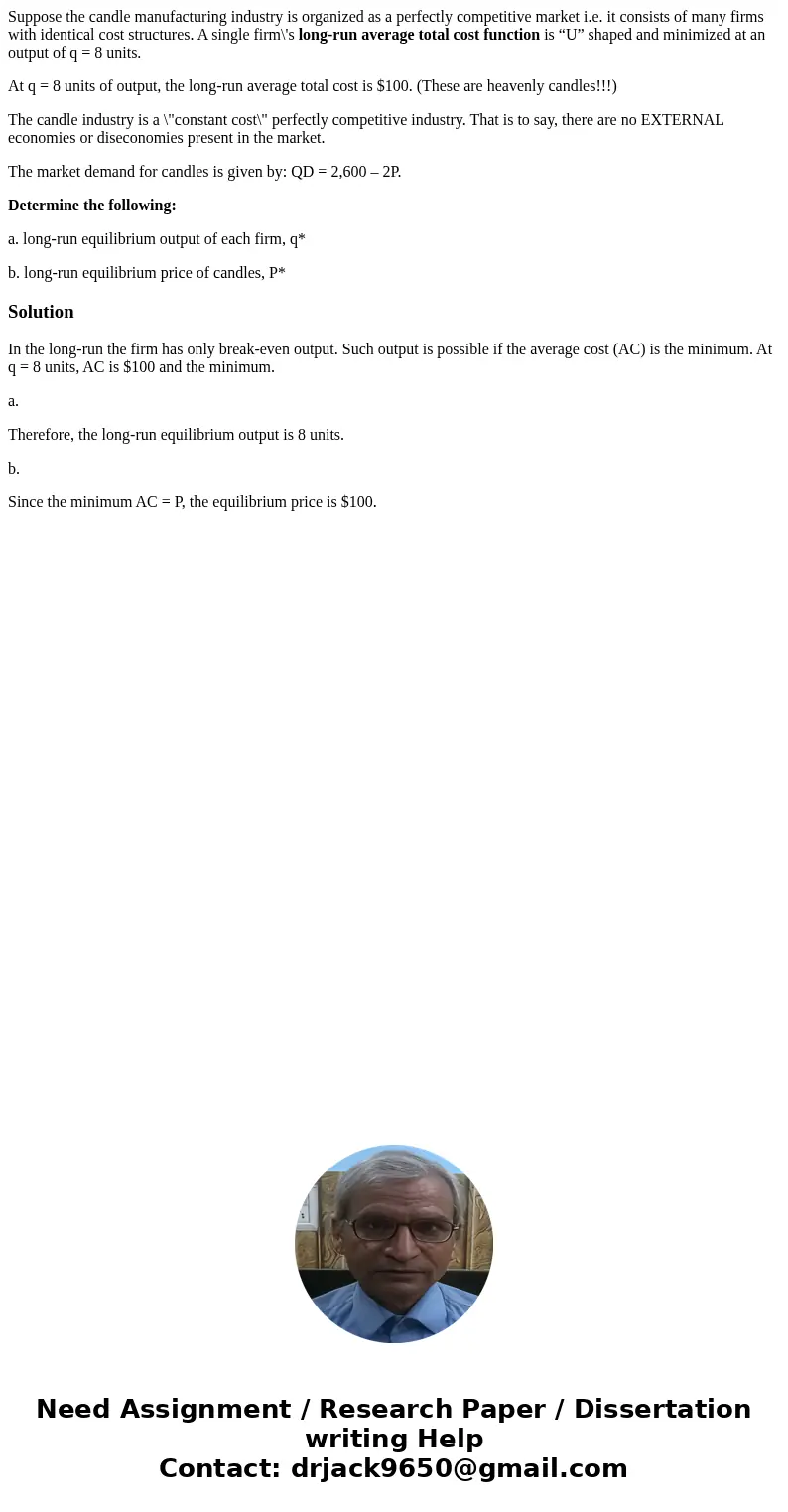Suppose the candle manufacturing industry is organized as a
Suppose the candle manufacturing industry is organized as a perfectly competitive market i.e. it consists of many firms with identical cost structures. A single firm\'s long-run average total cost function is “U” shaped and minimized at an output of q = 8 units.
At q = 8 units of output, the long-run average total cost is $100. (These are heavenly candles!!!)
The candle industry is a \"constant cost\" perfectly competitive industry. That is to say, there are no EXTERNAL economies or diseconomies present in the market.
The market demand for candles is given by: QD = 2,600 – 2P.
Determine the following:
a. long-run equilibrium output of each firm, q*
b. long-run equilibrium price of candles, P*
Solution
In the long-run the firm has only break-even output. Such output is possible if the average cost (AC) is the minimum. At q = 8 units, AC is $100 and the minimum.
a.
Therefore, the long-run equilibrium output is 8 units.
b.
Since the minimum AC = P, the equilibrium price is $100.

 Homework Sourse
Homework Sourse